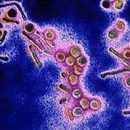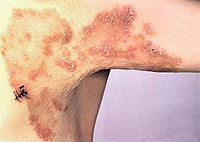Gonorrhea - an infectious disease caused by a gonococcus, which refers to venereal diseases. Women are infected with gonorrhea lighter, due to the characteristics of the structure of their genital organs and more often sick erased forms. Gonokoks are striking the mucous membranes of genital organs, causing inflammation.
Content
Gonorrhea – Infectious disease caused by Gonococcus (Neisseria Gonorrhoea), which relates to sexually transmitted diseases. Gonorrhea is transmitted mainly during sexual contact. The main sources of infection are men and women with an erased or chronic infection form. Infection from a sick gonorrhea of a person can occur with the immediate contact of the external genital organs, even if the penis is not introduced into the woman's vagina. Contact and household transfer path (through household items, toilet seats, towels and t.D.) Not proven. Children can be infected during childbirth, when passing through the generic paths of the mother, sick gonanes.
Immunity to gonococcus is not formed. Therefore, repeated infection is possible throughout life. Women are infected with gonorrhea easier, due to the characteristics of the structure of their genitals, more often sickly infect infection and more often infect men. It is probably not necessary to say that this disease is the most widely distributed among those who are leading active sex life and having an indiscriminate sex.
Manifestations of a gonococcal infection
Incubation (hidden) period of the disease lasts from 12 hours to 7 days, an average of 72 hours. At this time, the patient is already contagious and able to transmit a sexual partner disease.
 Gonococci affect especially gentle mucous membranes of genital organs, causing inflammation. Women are affected by the mucous meal of the urethra (urethra), the lower part of the rectum, the bartholinium glands (glands of the vagina), the cervical channel (cervical canal), the uterus cavity (endometrial) and uterine pipes. Thus, women are more often aware of the development of a gonorrheal urethritis (inflammation of the urethra), proctitis (inflammation of the rectum), endocervicitis (inflammation of the cervical channel), endometritis (inflammation of the uterine mucosa) and adhesitis (inflammation of the uterine appendages – ovaries and uterine pipes). The remaining forms of lesions, i.e. vulvit and colpit, arise mainly secondary in the presence of damage on the surface of the mucous membrane. In the most difficult cases, the development of peritonitis is possible, the spread of infection with blood flow and the defeat of her eyes, joints, hearts and other organs.
Gonococci affect especially gentle mucous membranes of genital organs, causing inflammation. Women are affected by the mucous meal of the urethra (urethra), the lower part of the rectum, the bartholinium glands (glands of the vagina), the cervical channel (cervical canal), the uterus cavity (endometrial) and uterine pipes. Thus, women are more often aware of the development of a gonorrheal urethritis (inflammation of the urethra), proctitis (inflammation of the rectum), endocervicitis (inflammation of the cervical channel), endometritis (inflammation of the uterine mucosa) and adhesitis (inflammation of the uterine appendages – ovaries and uterine pipes). The remaining forms of lesions, i.e. vulvit and colpit, arise mainly secondary in the presence of damage on the surface of the mucous membrane. In the most difficult cases, the development of peritonitis is possible, the spread of infection with blood flow and the defeat of her eyes, joints, hearts and other organs.
A few days after the infection, the first signs of gonoron begin to appear. More often the development of infection begins with urethritis phenomena. A woman begins to disturb thread and pain when urination. The area around the outer opening of the urethra swells, becomes red, droplet pus can be highlighted from the channel. At the same time, the cervical cervical channel is involved in the inflammatory process. Here are also observed signs of gonorrheal defeat. Woman notes the appearance of purulent, moderate or abundant discharge from the vagina. If the mucous membrane of the rectum is affected, processes, and this is accompanied by complaints of pain in the area of the rear pass and false urges for intestinal emptying. Sometimes the infectious process is involved in the eve of the vagina. Bartholinite develops in various forms and manifestations.
However, it is not always a gonorrhea manifests itself so bright, quite often in women the disease proceeds almost asymptomatic, which leads to further dissemination of infection and severe complications.
In the absence of timely treatment, the inflammatory process goes beyond the limits of external genital organs and applies to the mucous membrane of the uterine cavity. This disease is called ascending gonorrhea. The development of ascending gonorrhea contributes to sexual acts, decrease in immunity and intrauterine intervention. Inflammation of the uterine mucosa (endometritis) is manifested in the same way as the inflammatory process of nonspecific nature. The body temperature increases, the overall well-being will deteriorate sharply, there are stretching pain at the bottom of the abdomen. A woman begins to disturb the release of purulent vagina with blood admixture. Sometimes there are bleeding not related to monthly. Menstruation becomes long, abundant and painful.
The spread of gonorrheal inflammation on the area of the appendages causes the development of a gonorrheal adnexitis. Heavy general condition, high temperature, intoxication, severe pain at the bottom of the abdomen, giving up for a lower back and hips, – These are the concerns of the gonorrheal infection of appendages. A characteristic feature of inflammation caused by a gonococcus is the defeat of appendages on both sides, the rapid occurrence of irreversible changes in the fallopian tubes, with the development of their complete obstruction.
Acute disease manifestations continue not long. After two weeks, the number of complaints decreases, and after 2 months, the acute gonorrhea goes into a chronic form. Manifestations of the disease in the period of the clutter a little, and they are no longer such a pronounced. The inflammation of the urethra can practically disturb the woman, endocervicitis (inflammation of the cervical channel) at all in no way manifest. Minor purulent discharge of a sick woman can stay unnoticed.
With long-term flow of gonorrhea, the probability of distribution of infection in the uterine cavity and the uterine pipes and the development of a large number of adhesions in a small pelvis. Chronic inflammation of the uterine mucosa (endometritis) and appendages of the uterus (adnexitis) are accompanied by complaints with patients with constant stupid pain in the lower abdomen and lower back, amplifying after sexual intercourse or gynecological research. Periodically disturbed by the separating bleeding of sex tract, impairment of the menstrual cycle. Periods become frequent, painful, abundant. Almost always infertility arises.
Chronic gonorrhea prone to exacerbations. Most often, they are provoked by supercooling, sexual acts, gynecological intrauterine manipulations, decrease in immunity as a result of transferred general infections. Exacerbations proceed as a detailed inflammatory process with a large number of manifestations.
Diagnosis of a gonococcal infection
In the gynecological examination, the doctor detects all signs of inflammation depending on their prevalence and colorfulness of manifestations. In general, the picture does not differ from those with diseases caused by nonspecific glorious flora. The decisive in the diagnosis of gonorrhea will be the detection of gonococcal when laboratory study of smears and crops from the urethra, cervical canal and rectum. PCR (polymerase chain reaction) is also used to diagnose gonorrhea, which allows to identify the presence of hemoma of gonoclocks in various biological fluids. In addition, the blood of the patient is exposed to a study on syphilis and HIV.
Considering that Gonorrhea refers to venereal diseases, further examination and treatment of a woman and her sexual partner, or partners pass in the skin-venereological dispensary.
Treatment of a gonococcal infection
 So, a woman gets a direction in the skin-venereologic dispensary. There is a notice of the detection of a case of gonorrhea.
So, a woman gets a direction in the skin-venereologic dispensary. There is a notice of the detection of a case of gonorrhea.
In a venereological dispensary, a woman is interviewed about her sexual contacts, if necessary, searching activities are carried out. Often requires treatment in venereological hospital. All this is necessary to curb the distribution of infection among people and in the interests of a woman do not hide anything from the details of her intimate life.
In the treatment of gonorrhea, a course of specific antimicrobial therapy is appointed. Mandatory condition for successful treatment is abstaining from sex life. After the end of the course of treatment, control of crushing from a gonorrheal infection after 2 and 14 days after the end of treatment. In case of detection of Gonokkokov (Neisseria Gonorrhoea), treatment repeat. Remember that in time the appointed treatment of gonorrhea will help you to recover and avoid complications.









